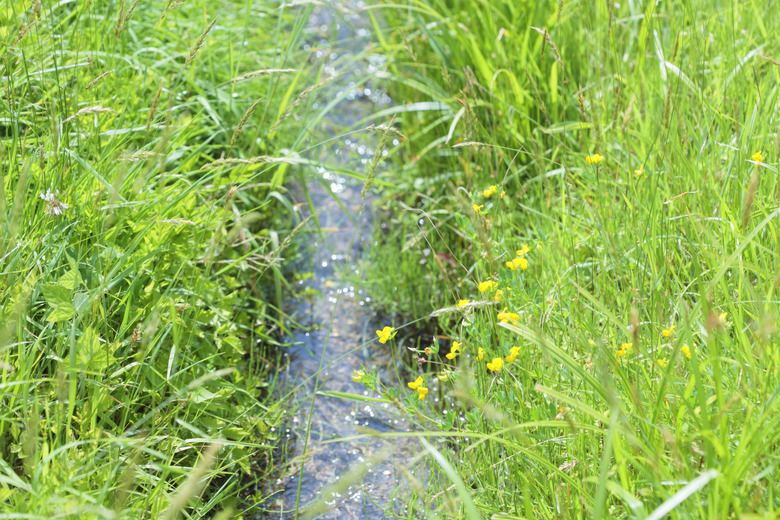What Is Soil Erosion?
Soil erosion is the movement of soil from one place to another and may be caused by wind, water or human activities. The process can occur naturally over a long period of time, or it can occur quickly with unusual weather events or excessive vegetation removal. Erosion affects both farmers and home gardeners.
Geological Erosion
Geological Erosion
Geological erosion occurs very slowly. The Grand Canyon provides an apt illustration. In that case, the Colorado River eroded the canyon over a period of five to six million years, forming the entire canyon gorge. Some types of rocks broke down faster than others, which led to the interesting shapes of the remaining rock formations.
Erosion by Wind
Erosion by Wind
The dust storms and high winds that ravaged the Great Plains during the 1930s illustrate the power of wind to erode soil. Winds on the plains picked up soil easily because so much land had been tilled and no longer had the natural prairie grasses holding the soil in place. The wind began the erosion process alone, and then the situation became aggravated when the soil carried by the wind scoured the rest of the land.
Erosion by Water
Erosion by Water
Rain, floods and landslides caused by water all account for water-based erosion. The National Soil Erosion Research Lab website notes that raindrops can strike the earth at over 20 miles per hour, splashing soil into the air and causing gullies and runoff by moving the soil from its original location.
In your garden, you may see signs of water erosion in the form of rills and gullies:
- Rill erosion occurs when water washes through the slats on a deck or patio or the eaves of your house, causing the soil underneath to form a furrowed pattern of troughs, where the water dripped down.
- Gully erosion creates mini-canyons, or gullies, on bare hillside slopes where you may not have enough plants or ground cover to halt the flow of water, haven't built a retaining wall, or haven't installed a drainage system.
Consequences of Erosion
Consequences of Erosion
Although your yard may not experience the degree of erosion that happens in farmland, erosion can cause you problems:
- Loss of topsoil in any amount reduces the fertility of your soil and the amount of nutrients available to your plants.
- Lose of topsoil might reduce the water-holding capacity of the soil, allowing water to run off quickly instead of lingering long enough to soak into the soil and nourish roots.
- Water erosion can wash away fertilizers or pesticides that you've applied to the soil to nourish or protect plants.
Cite This Article
MLA
Lundman, Susan. "What Is Soil Erosion?" sciencing.com, https://www.sciencing.com/what-is-soil-erosion-12498141/. 24 March 2011.
APA
Lundman, Susan. (2011, March 24). What Is Soil Erosion?. sciencing.com. Retrieved from https://www.sciencing.com/what-is-soil-erosion-12498141/
Chicago
Lundman, Susan. What Is Soil Erosion? last modified March 24, 2022. https://www.sciencing.com/what-is-soil-erosion-12498141/
